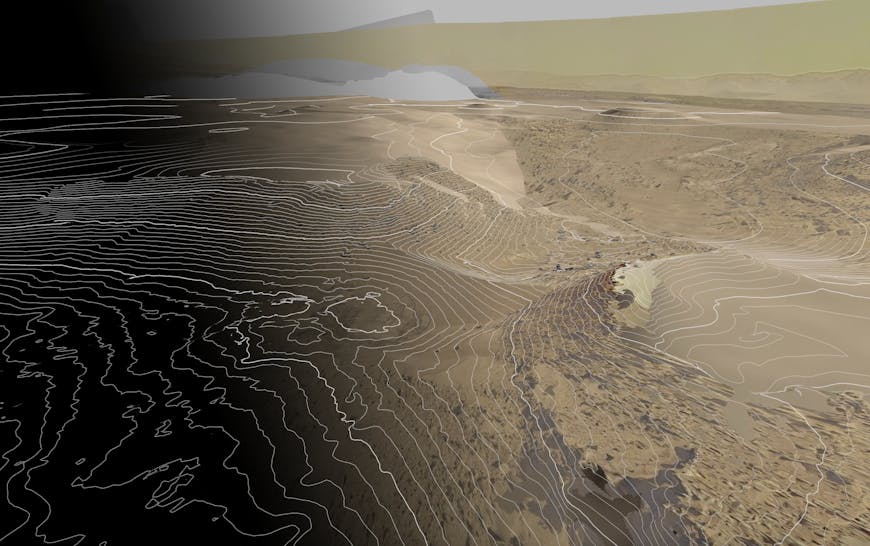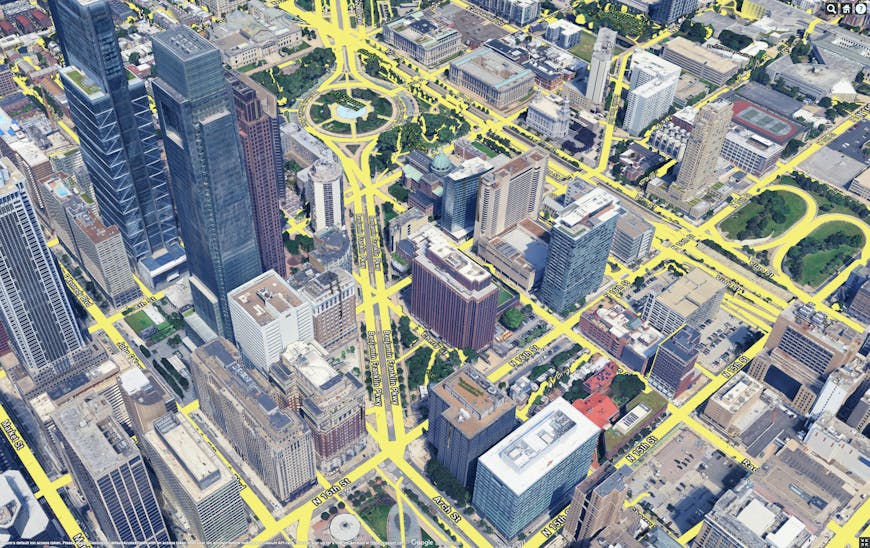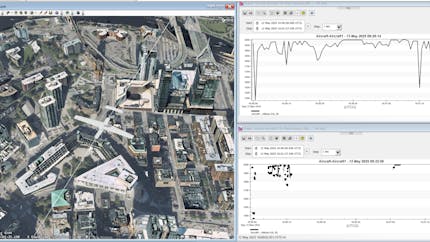Cesium Releases in June 2025
In May, we introduced 3D Tiles for Godot by Battle Road; explained why we use Iron Bank container images for software security in Cesium ion; attended GEOINT Symposium; announced the most recent Cesium Ecosystem Grants awardees; and turned the spotlight on the aerospace and defense, Cesium/iTwin/3DTiles, and market and education tracks at the Cesium Developer Conference. We look forward to connecting with the community at devcon in just a few weeks. (Have you registered?)

The follow-up Cesium Ecosystem Grant to Garrett Johnson will focus on expanding the 3DTilesRendererJS project’s support for basic geospatial visualizations (topographic lines) and available data formats (TMS, QMesh) for Three.js. Pictured here is Mars.
We made improvements across Cesium this month. To get notifications about our monthly releases, you can subscribe to the Cesium release roundup thread on our community forum.
CesiumJS 1.130 release
CesiumJS 1.130 is now available. Highlights of the release include:
- Added basic support for draping imagery on 3D Tiles. #12567
- Added support for 3D Textures, with a
Volume Cloudsandcastle example. #12661. Many thanks to community contributor Hiwen for significant work on 3D Textures. - Updated the
FragmentInputstruct for voxel shaders to be more consistent with otherCustomShaders. #12636 - Fixed voxel rendering with orthographic cameras. #12629
For more details, see the changelog.

An example of draping imagery on 3D Tiles: Google Photorealistic 3D Tiles with Google Roadmap tiles overlay.
Cesium for Unreal 2.16.1 release
Cesium for Unreal v2.16.1 is now available. Highlights of this release include:
- Added support for
TRIANGLE_FANprimitives in tile meshes. - Worked around an Unreal Engine limitation that prevented collisions and line traces from working correctly for tilesets with a very small scale factor.
- Add a missing include for
GEnginewhen packaging from source, introduced inv2.16.0. - Fixed a regression from
v2.16.0that prevented the water mask from showing at closer distances. - Fixed a bug in
UCesiumFeaturesMetadataComponentwhere multiple references to same feature ID set would cause improper encoding of its feature IDs. - Fixed a crash that would occur when duplicating an
ACesiumGeoreference. - Fixed a bug that caused tilesets to render incorrectly when Dynamic Material Instances were used for their material settings.
- Removed an unnecessary copy operation that happened while constructing tile meshes.
Check the Cesium for Unreal release and the Cesium for Unreal Samples release for the full list of updates.
Cesium for Unity 1.16.1 release
Cesium for Unity v1.16.1 is now available. This release incorporates Cesium Native v0.48.0, providing fixes such as:
- Fixed a bug that prevented the Cesium ion troubleshooting window from appearing when tilesets were loaded with invalid tokens.
Check the Cesium for Unity changelog for the full list of updates, and follow our Cesium for Unity tutorials to get started.
Cesium ion updates
Reality Tiler
- Added support for mipmap generation, which is on by default.
- Reduced peak memory consumption.
- Improved texture quality for thin, double-sided geometry.
- Fixed an issue where some tiles could have duplicate triangles.
- Fixed an issue where geometric compression would not be applied to tilesets with a single tile.
- Reduced border erosion due to simplification.
- Fixed an issue where simplification would incorrectly handle borders.
- There are several breaking changes for configuration files:
gltfandtilesetoptions are now underoutputcsvoptions are now underinputobjoptions have been removed
Design Tiler
- There are several breaking changes for configuration files:
gltfandtilesetoptions are now underoutputcsvoptions are now underinputobjoptions have been removed
Check the changelogs for the full list of updates for Cesium ion SaaS and Cesium ion Self-Hosted.

Ansys Geospatial Data Cloud integrates Cesium ion Self-Hosted and global 3D content to provide STK with out-of-the-box access to accurate geospatial context within its time-dynamic simulations.

Boost Graphics uses Cesium for Unreal and Google Photorealistic 3D Tiles to create dynamic locators of the Premier League's stadiums across the United Kingdom for a global TV audience.